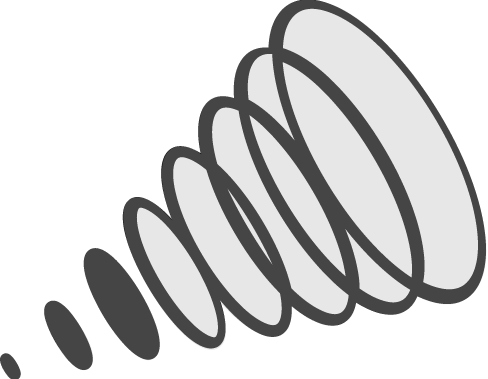Acute condition: A condition that generally last a short period of time and which can be cured, such as a broken bone, ear infection or tonsillitis. An acute condition normally disappears after treatment.
Acute medication: Medication that is prescribed as a once-treatment to clear up an ailment such as antibiotics for a sinus infection or anti-fungal cream for a fungal infection. Acute medication is normally paid from out-of-hospital benefits in the case of a comprehensive medical aid, or from your medical savings account.
Adult dependant: Generally speaking, an adult dependant is someone over the age of 21 years of age. They will be charged the stipulated adult dependant rate.
Alternate healthcare: Also referred to as complementary medicines, this includes therapies such as chiropractic, homeopathy, naturopathy, osteopathy, and reflexology. These therapies are regulated by the Allied Health Professions Council, and most medical aid now pay for these therapies, subject to limits and sub-limits.
Benefit year: Most schemes’ benefit years from 1 January to end-December, with members being given the option to change plan option effects January of each following year. If you join a medical scheme during the course of a benefit year, your benefits will be pro-rated. Most schemes do not allow members to upgrade their plan options during the course of a benefit year.
Child dependant: A child dependant is anyone under the age of 21 years, and who will be charged the scheme’s child dependant rate. The definition includes natural children, stepchildren, legally adopted children, or children placed in legal custody of the member.
Chronic condition: A chronic condition is a life-threatening condition that persists for three-months or longer and which requires ongoing treatment such as diabetes, HIV, cancer, or asthma.
Chronic medication: Chronic medication is prescribed for life-threatening conditions such as heart disease or high blood pressure, and generally needs to be taken for longer periods of time.
Co-payment: A co-payment is a fixed Rand amount that your medical aid requires you to pay from your own pocket for specific treatments or procedures. Typically, co-payments are charged for in-hospital procedures, scopes, scans and radiology.
Day-to-day benefits: These are benefits which are not covered by the hospital or risk component of a medical aid. Comprehensive medical aids offer day-to-day benefits for out-of-hospital costs such as dentistry, optical, GP consultations, and acute medication. If you have a hospital plan with a medical savings account, your day-to-day healthcare costs will be covered by your MSA. In the absence of a medical savings account, you will need to fund all your day-to-day healthcare costs.
Designated service provider (DSP): A DSP is a healthcare provider, such as a GP or hospital network, which has been contracted by a medical scheme to provide services to its members. Many schemes require their members to make use of their DSP in order to ensure that their treatment is covered in full. Where members choose to use a non-DSP, they may be required to pay a co-payment.
Disease management programme: Most medical aids have disease management programmes, especially for common diseases such as diabetes, kidney disease, HIV/AIDS, asthma, and cancer. The aim of these programmes is to develop treatment protocols designed to improve the health of members, slowing down the progression of the disease, and controlling or reducing the associated costs of treatment.
Exclusions: Every medical scheme has a published list of treatment and care that it does not pay for. These generally include cosmetic treatment, treatment for self-inflicted injuries and/or suicide, treatment for obesity, etc.
Gap Cover: Gap cover is short-term insurance designed to cover the shortfall between the amount charged by doctors and specialists in hospital, and the amount paid out by your medical aid. Its role is to provide additional financial protection to medical scheme members who receive in-hospital treatment and care so that they are not saddled with large out-of-pocket expenses following a hospital event.
Hospital plan: A hospital plan provides cover for in-hospital treatment only and generally includes theatre costs, X-rays, medication, blood tests, and blood transfusions performed while you are in hospital. Hospital plans can range from a network option limited to 100% of medical aid tariff to fully comprehensive hospital cover that pays at 300% of medical tariff, so it is always important to know what you are buying.
ICD-10 codes: A globally accepted disease classification and coding system developed by the World Health Organisation that identifies diagnoses, symptoms, and procedures. It stands for International Classification of Diseases, Tenth Revision
Late joiner penalty: Because medical aids operate on the basis of cross-subsidisation, those who choose not to belong to a medical aid earlier in life can be charged a Late Joiner Penalty when they ultimately apply for membership. Where a member is age 35 years or older and has not been a member of a medical aid before 1 April 2001, or where there has been a break of longer than three consecutive months, the scheme can charge a late joiner penalty. Depending on your age and break in membership, your premiums can be loaded between 25% and 75%.
Managed care: Managed care is used by medical schemes to reduce costs, while still keeping the quality of care high, and these can be done through provider networks, provider oversight, drug formularies, chronic condition programmes, and pre-authorisation mechanisms.
Medical Savings Account: If your plan option includes a medical savings account, a portion of your monthly premium will be allocated towards this fund. The funds in your medical savings account can be used to cover day-to-day healthcare costs in accordance with the rules of the scheme. Once you have depleted the funds in your medical savings account, you will need to pay for day-to-day healthcare costs from your own pocket.
Medical scheme tariff: Medical expenses such as doctor, specialist and hospital costs are not regulated, and service providers are entitled to charge fairly for their services. However, the Department of Health has issued a price guideline (known as the Reference Price List (RPL)) which is used by medical aids as a guideline when setting their rates. These medical scheme rates differ from scheme to scheme but, in general, the more basic plan options cover in-hospital costs at 100% of the medical scheme rate whereas the top-end plans pay up to 300% of the medical scheme tariff.
Member family: Refers to the principal member and all his/her registered dependants which can include a spouse, adult children who are financially dependent, and aged parents.
Network provider: A list of service providers, including hospitals, GPs and pharmacies, who have been contracted to a medical scheme to provide treatment or medication at an agreed rate.
Overall annual limit: An overall limit is a cap on the benefits offered by a medical scheme in a given benefit year.
Over-the-counter medicines: Medication that you can buy over the counter at a pharmacy without needing a prescription from your doctor or specialist.
Pre-authorisation: Most medical schemes require that you obtain pre-authorisation before being admitted to hospital.
Pre-existing condition: Any health condition from which you suffer at the time of applying for membership of a medical scheme, keeping in mind that your condition must have been diagnosed by a registered healthcare provider.
Prescribed Minimum Benefit: Prescribed Minimum Benefits (PMBs) are a set of defined benefits to ensure that all medical scheme members have access to certain minimum health services, regardless of the benefit option they have selected. The aim is to provide people with continuous care to improve their health and well-being and to make healthcare more affordable. In terms of the Medical Schemes Act, medical schemes have to cover the costs related to the diagnosis, treatment and care of any emergency medical condition, a limited set of 271 medical conditions, and 26 chronic conditions which are defined in the Chronic Disease List.
Roll-over benefit: Any unused amount that you have in your Medical Savings Account at the end of a benefit year will be rolled over to the next year and added to that year’s MSA balance. This is referred to as a roll-over benefit.
Threshold benefit: Generally provided by comprehensive medical aid plans, a threshold benefit is risk cover which kicks in after you have depleted your Medical Savings Account. In most cases, there is a self-payment gap during which members have to fund their own medical aid expenses before the threshold benefit kicks in.
Waiting periods: When applying for membership of a medical aid, there are two types of waiting periods that can be imposed. Firstly, there is a three-month general waiting period during which no claims will be paid. Thereafter, members can face a twelve-month waiting period on any pre-existing conditions that they have, although this waiting period can only be applied if you are joining a medical scheme for the first time, or if you have had a break in membership of longer than 90 days. During this period, a member will need to pay full medical aid premiums, while all medical expenses – excluding those relating to Prescribed Minimum Benefits – will be for their own account.
Have an amazing day.
Sue








